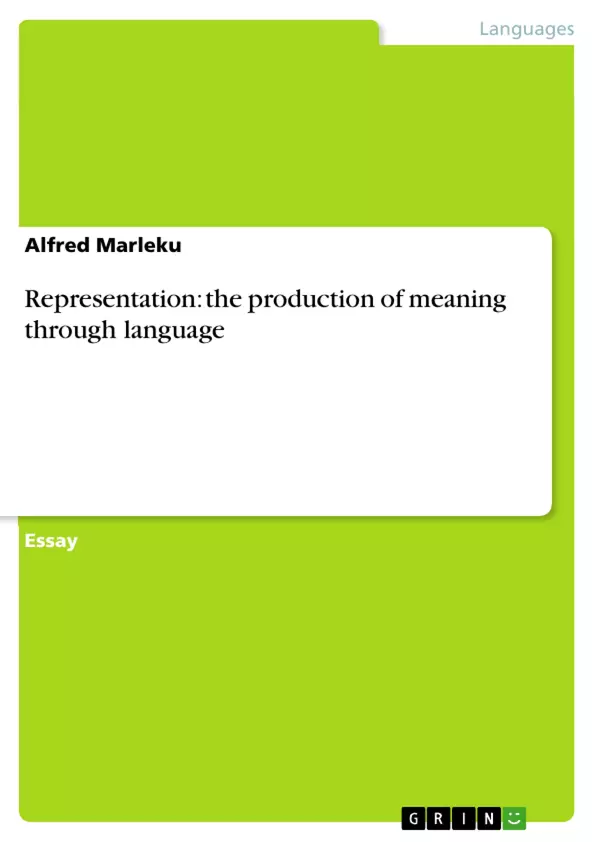Human beings created a world of messages and meanings and continue to create new ones to look for the meaning of life. In order to communicate with each other and leave their stories for the new generation, humans have been using the power of images and symbols since the beginning of the human history. It is this greatest purpose – communication – that makes human beings to construct their system of signs and symbols – their language – to make the world meaningful. This essay is an attempt to deal, in general, with question of representation – the production of meaning through language. In first part of the essay we define, shortly, three theories of representation, with the main focus on the constructionist theory. In the second part we will show how the constructionist approach has to do with representation, the relationship between them. And, in third part we will explain the importance that these theories have in relation with communication. We will focus our attention on structuralist semiotics – in Ferdinand de Saussure and Roland Barthes works.
Table of Contents
- INTRODUCTION
- WHAT IS CONSTRUCTIONISM?
- WHAT DOES IT HAVE TO DO WITH REPRESENTATION?
- WHY DO SUCH THEORIES MATTER IN RELATION TO COMMUNICATION?
- The Basic Concepts of Semiotics According to Saussure
- Roland Barthes: Denotation - Connotation and Myths
- CONCLUSION
Objectives and Key Themes
This essay explores the concept of representation, focusing on the constructionist theory of meaning through language. The essay delves into how constructionism relates to representation and its significance in the field of communication. It investigates structuralist semiotics through the works of Ferdinand de Saussure and Roland Barthes.
- Constructionist Theory of Representation
- The Role of Language in Constructing Meaning
- The Relationship Between Language and Representation
- Structuralist Semiotics
- The Importance of Representation in Communication
Chapter Summaries
The essay begins by outlining three theories of representation: reflective, intentional, and constructionist. The focus shifts to explaining the constructionist approach, emphasizing that meaning is not inherent in objects but constructed through language. The essay then examines how this theory relates to representation, highlighting that language, as a system of signs and symbols, is both constructed by humans and the tool used to construct meaning. The chapter also explores the arbitrary nature of language and the role of social conventions in creating representational systems.
Keywords
This essay focuses on the core concepts of semiotics, constructionism, structuralism, denotation, and connotation, investigating their relationships to representation and communication.
- Citation du texte
- MSc. Alfred Marleku (Auteur), 2005, Representation: the production of meaning through language, Munich, GRIN Verlag, https://www.grin.com/document/198860



